What lingers, what remains – An interview with Rogine
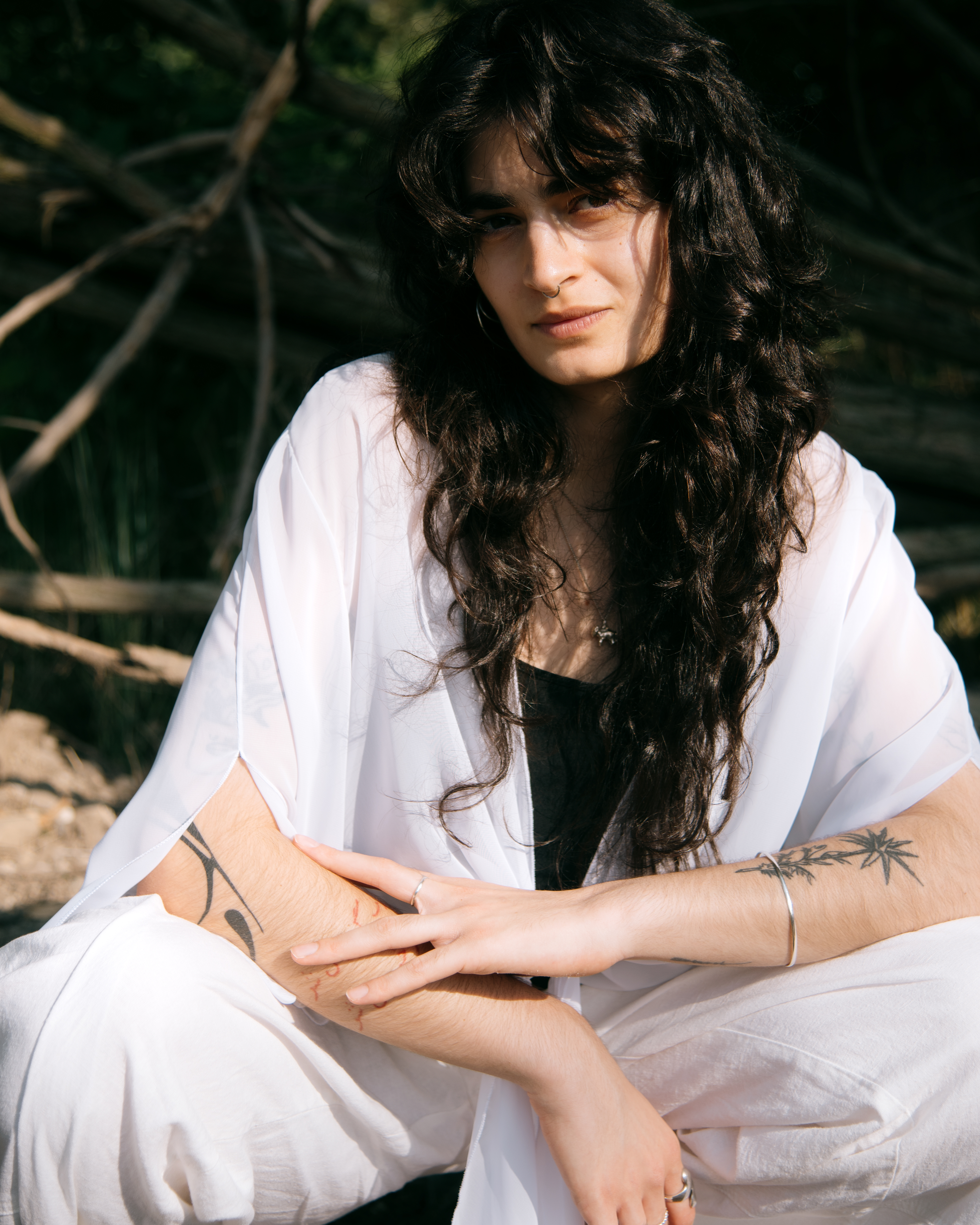
rogine will perform on Wednesday, 3. September at WUK Projektraum as part of Unsafe+Sounds Festival.
Your latest album “breathe down my neck” ( was released in 2024. The track titles open up a world that feels inward, quiet, restrained, emotionally dense:
pour me in your pocket, handle me with care,
its always the same
To laugh with you, forever (my heart sits heavy)
december lullaby
Can you share some memories and thoughts on the process behind the release ?
I started writing and recording the album in the early days of January 2023. It came from a deep need to release all this pent up energy that I had been keeping within myself. I was going through an intense period of change and grief and it felt like the only way forward was to release all these big feelings into sound. I didn’t intend to write an album or I wasn’t really writing for an audience, but rather using my time by myself in my art studio (with the worst sound acoustics) to just write and record whatever I felt. I remember after writing “baby’s song (he listens to disco)”, one of the first songs I wrote for the album, I just sat and laughed about it for a few minutes. Through all the grief, this song coming out felt like comic relief. It also felt like I’d broken some wall in which I could make music that was both sad and fun at the same time. It also felt like a technical breakthrough, as if I had granted myself the permission to layer and sing and just sound as I wished. A lot of change happens through grief, as though we finally give permission to ourselves to be and become this person we’ve been afraid of becoming. There’s a part in the song where you can hear me laugh in the recording, the whole song in the context of how I was feeling at the time felt so funny and absurd…
„feelings that linger and melt into one another“
While listening to breathe down my neck, I kept returning to a kind of liminal mood the album seems to inhabit. The sound moves through a space between remembering and forgetting, through blurry lines where memory begins to fade but never fully disappears. There’s a strong sense of fragmentation, of things half-heard, delayed, forgotten, and remembered. Are these themes that play a recurring role in your artistic practice?
Yes absolutely! What a beautiful way to describe it. I think a lot of my practice – both in my music and art revolves around this tension. It’s between being earnest or transparent and putting forward these feelings and images but also being afraid or cautious to not let those images overstay their welcome. It’s about processing these ideas in real time, without any formula. I like feelings that linger and melt into one another, a feeling of something that could’ve been or perhaps will be but you can’t quite arrest it. In this middle space where time and being floats, is where I feel most comfortable. It creates a vulnerability that I find so beautiful, you don’t owe anything and you are everything. It creates space to just exist and perhaps thread the memories you want to keep and lose ones you don’t.
On breathe down my neck grief doesn’t announce itself, it lingers. You’ve called the album “an ode to grief and the many ways it shows up, and the many ways we process it.” Can you talk about how that idea shaped the structure of the album?
I only realised I was writing about grief somewhere at the end of the album,when I’d already finished writing most of the songs. It definitely wasn’t intentional to write a grief album but grief is such a recurring theme in my work, that I think the album formed itself organically. Grief is so deep and everringing, it’s impossible to somehow capsulise it into one project or being. It shows up over and over again, it’s all the love lost that you somehow can’t process or release. And it’s something that you spend most of your life dealing with, even if only in parallel to your conscious thoughts. I processed a lot of my own grief by writing this album and hoped it would be able to aid others to do the same, create a space where for whatever time you can feel heard and taken care of.
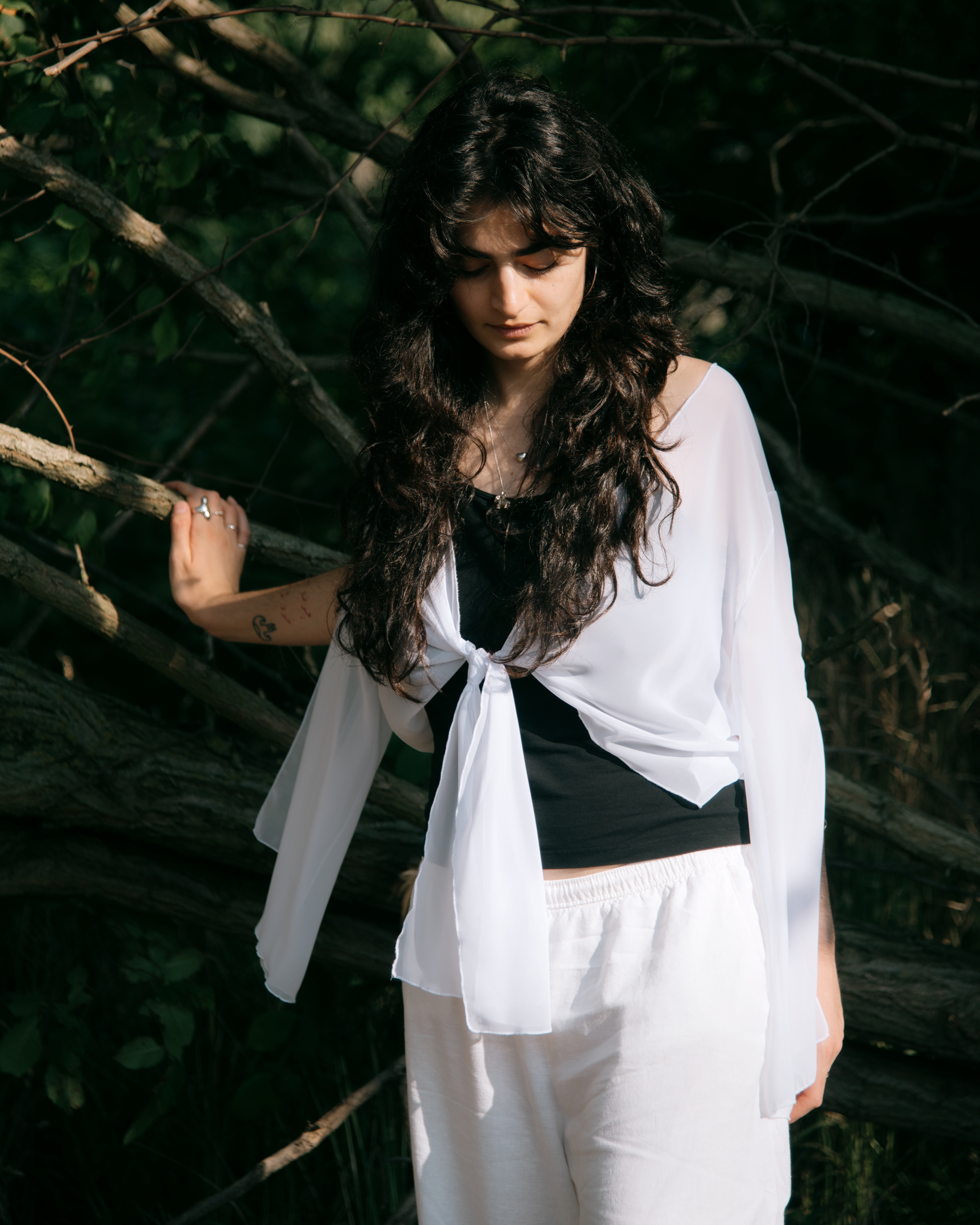
Tell us a little about your artistic background. How did sound become part of your artistic vocabulary, which ideas or influences have stayed with you over time?
I’ve always been really drawn to materials that move and feel both light and heavy at the same time. Because of this, I began primarily using fabric as my go to material from an early stage. I think fabric is a loaded material as is and found this transformation that I would put it through so exciting and interesting. Like manipulating fabrics out of their use to create these images that weigh lighter or heavier and start to speak to you through their form.
My music and art practice have for the majority of my life ran parallel to each other, only overlapping sometimes. I started using sound as a tool in my installation when I felt like I had tired out using only fabric. In this way I went backwards to see if I could use just sound in installations, without any visuals and whether I could almost recreate this feeling that I do through my fabric installations but only as sound.
This technique of working backwards and almost stripping the works of their layers is something that has stayed in my practice. Whenever I feel stuck, I try to work backwards and realize that more often than not, a new way is born through going back and starting again.
How would you describe your development in working with sound? Has a particular way of working emerged for you, a rhythm, ritual or method that you return to?
I record a lot of sounds here and there or parts of songs that come in my head out of the blue but the process that I sort of perfected in the last album was to start off with a feeling and translate it into a melody and noise first. Then maybe sit on it for a bit to see if it felt right and then write text for it. This is so unlike my art practice where in the early days, most of my works came from a text I had written and the need to provide these texts with a physical vessel. I like how unlike the two practices are. They’re definitely always influencing each other but adamant to be seen as their own.

„I have an obsession with preservation and memory, I want to remember everything and I fear forgetting.“
There’s something archival in the way you work, gathering what’s fragile, ephemeral, often overlooked. Do you see your practice as a form of soft archaeology, as a way of building your own kind of archive though sound?
Yes one hundred percent. I have an obsession with preservation and memory, I want to remember everything and I fear forgetting. This fear of loss makes me have the need to write and archive almost everything. I want to be able to revisit each and every feeling in some way, be it fully or from a distance. Going back to these archives is super interesting and inspiring for me. I’ve got boxes and boxes of journals and recordings detailing most of my life basically from the moment I learnt how to write. It’s definitely obsessive in some way, but it creates these time capsules that are mine and that I have full access to. Of course archiving casts the shadow of how you choose to preserve that memory. I find this nuance so interesting, like recognizing yourself or different versions of yourself from the past.
Is sound a way for you to process something that’s already passed, or still arriving?
I think both. Like scent, sound holds memories, but can also build anticipation of what is yet to come, what is already in motion.
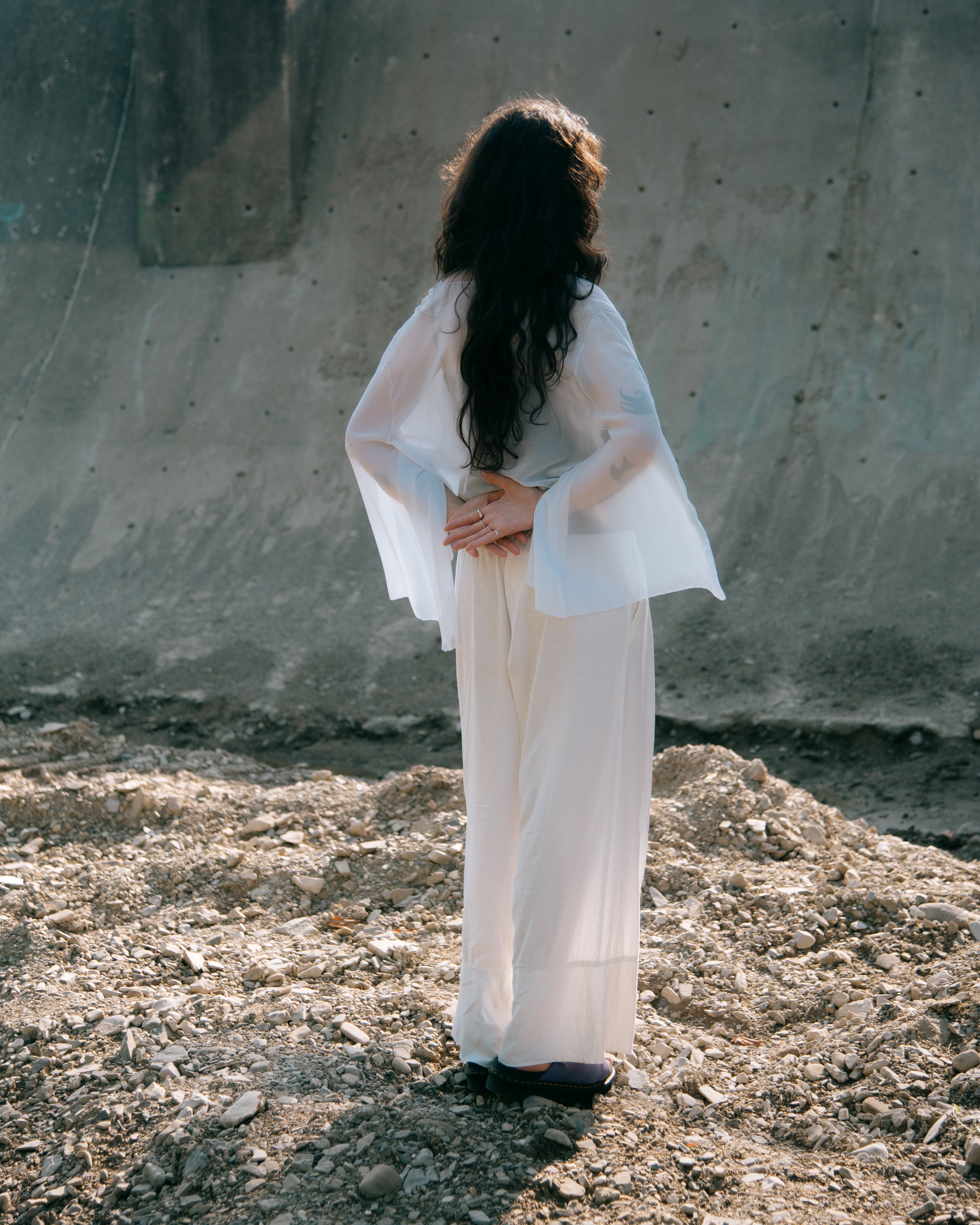
„I don’t want to always be perceived as the “I” and I am also not always the “I”.“
In your work, voice and language often function as a fragmented narrator. Without following a straightforward narrative path, reflecting a reality that appears only in fragments, traces, broken lines. The voice seems to shift between narrator, witness, and tool. Do you consider the use of text and words as something stable in your practice, or more as a way to evoke a trace, a remainder, something left behind, but still present.
I think both – text and language definitely play an important and at times integral part in my practice. I like to challenge the point of view, to not constantly be seen as the “I”. It creates a different version of yourself that you can use in your work. I don’t want to always be perceived as the “I” and I am also not always the “I”. Words like fabric are another tool I like to play with and push, to move them sometimes out of their intended use.
The album opens with an intro conversation with James, a spoken fragment of a voice that feels intimate, but slightly detached. Much of your work, both in sound and installation, feels like it’s in conversation with something that’s not quite here. What does “conversation” as a form mean to you and your practice ?
Conversation means movement, or transformation, the birth of something new. I grew up speaking 5 languages and have spent many days where I feel like I can’t fully express myself in any one language. I think that’s why I find conversation and communication so interesting as a form. In many ways they feel like a blueprint in my practice.
My work attempts to give birth to new forms of communication, especially when existing ones seem to have failed or reached their limits. That failure is where the excitement begins for me, using conversation not just as a tool, but as something with its own agency, something that can speak, sing, or resonate. I’m drawn to pushing the boundaries of language, creating and giving a voice to things or forms that would otherwise only exist in a non space, not really ever caught.
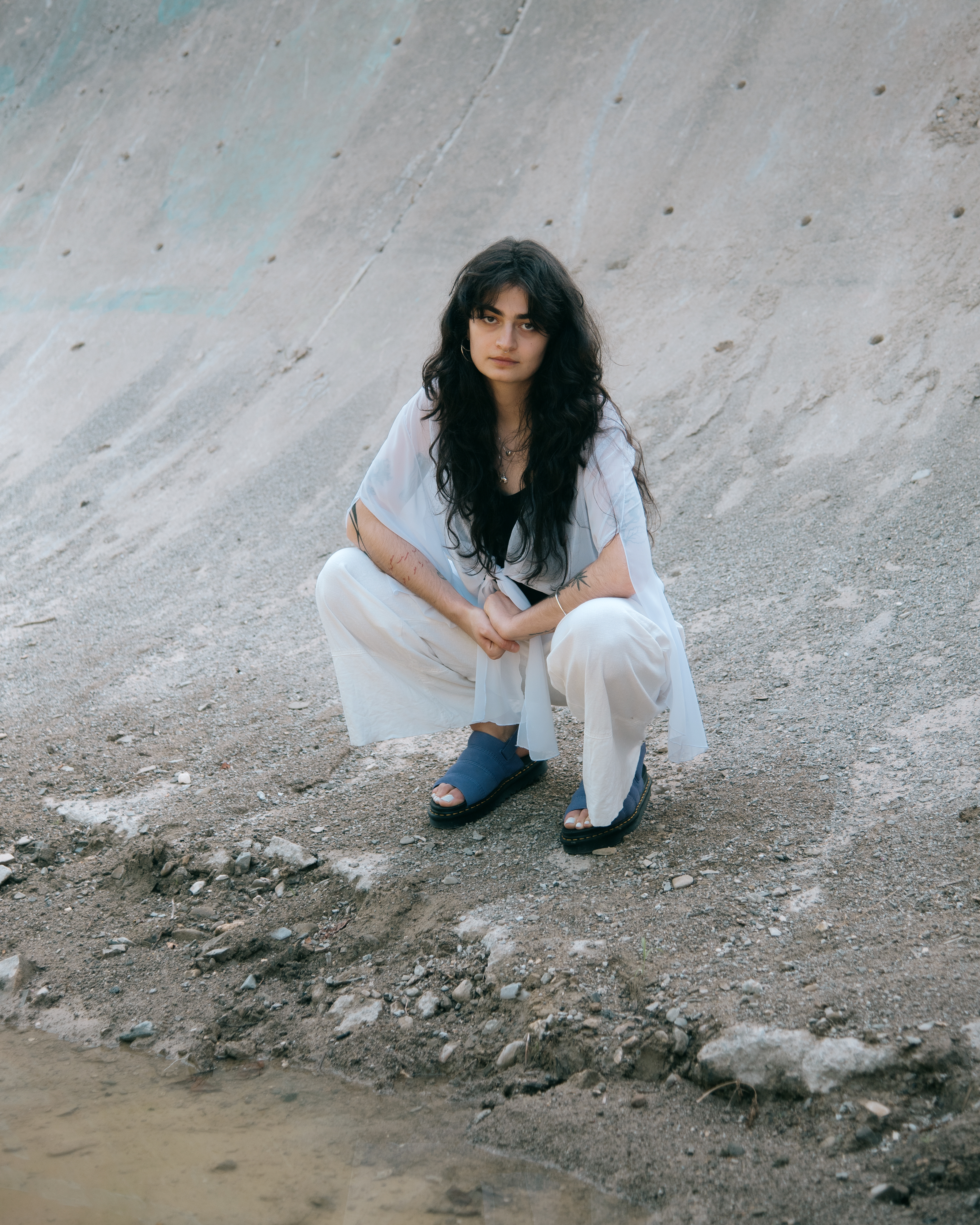
„How would a sea creature speak and grieve loss?“
Apart from your sound releases, you also work in the field of visual art, through installation, spatial gestures, and performance. How does your visual and performative practice shape your sound work, or vice versa?
My performances and installations always feel like a character or another version of myself, while my music is a more direct representation, a more unfiltered me. My art practice allows me to be more analytical and to constantly question my movements whereas my music allows me to just exist and I think they both influence each other by keeping me grounded in their own ways. In many ways it also helps when I feel stuck in one to be able to go to the other for comfort or rest.
In as the ocean dries, one of your more recent performance pieces, your body is wrapped in white layers, veils, long fabric. Could you share a bit more about this piece and how material, gesture, and sound come together in your work?
This piece actually started as a series of sounds and harmonies I recorded. The more I worked with those sounds, the more I had to think of water and the sounds of the ocean. All of this together brought to my mind an image of a grieving siren. One that was left to pick themselves up after a heavy loss.
I wanted to immerse myself in this metaphor, this loss. How would a sea creature speak and grieve loss? How would they be dressed? I wanted to bring together the sounds and materiality of my installations and translate them into this story. Veils, soft fabrics and net are my favorite textiles to use in my work because of the connotations they represent to me. They mimic softness, care, safety as well and strength and security. This duality of being able to hold yourself up while also accepting a hand. I enjoy creating a ghost or an image fleeting and these fabrics help me materialise that notion.
“In the trenches of our love
Remains nothing but a decline—
A ghost of another time,
Or perhaps a memory that was never really mine.”
The ending text of the performance really ties these gestures together.

“Sound is such a direct recording of time.”
Grief and loss seem to be everywhere, yet also nowhere. Obscured by screens, fast timelines, a culture that rarely allows space to stay with them. Can sound, in your view, create a different kind of attention toward memory and collective remembrance?
Yes absolutely. Sound is such a direct recording of time. You immediately have an image in mind when you hear a sound or voice, it belongs to someone or something and in this way we can eternalise a moment and revisit it whenever we need to. I think being able to go back to sound and noise that evokes a certain meaning or memory is so important to creating a collective remembrance of a time, being able to experience it together and to preserve community.
Born in New York, living in Vienna, with Iranian roots, your biography moves across multiple cultural spaces. Do these cultural and geographical layers shape your perspective as an artist?
Absolutely, I always feel like I’m in between and never fully part of any place.I grew up in a constant fight with my identity. Trying to find a place to belong has definitely influenced my practice. I am learning each day that I have the permission to be as I am and not have to adhere to any one culture and have the privilege of being able to pick and choose from each. This also forced me to create my own space where I feel comfortable and seen. As well as to constantly challenge that self imposed comfort and grow within and beyond that space.
What are you currently working on and what’s coming next?
I am currently working on a new installation series called “on the morning of the burial”. The project investigates grief as both rupture and potential, while also examining how personal and collective experiences of loss interrupt and reshape memory, identity, and human connection. It critiques the Western ideal of self-reliance by emphasizing our dependence on connection and community.
And for my music – I just released a new music video for the song “water signs” and with that will slowly start wrapping up the “breathe down my neck” era. In August I will begin working on a new album while also releasing a single that I’ve been working on with a good friend of mine. Whether the single will be part of the new album or not, I’m not sure yet but in any case I’m very much looking forward to all the new upcoming sounds that are yet to be made.
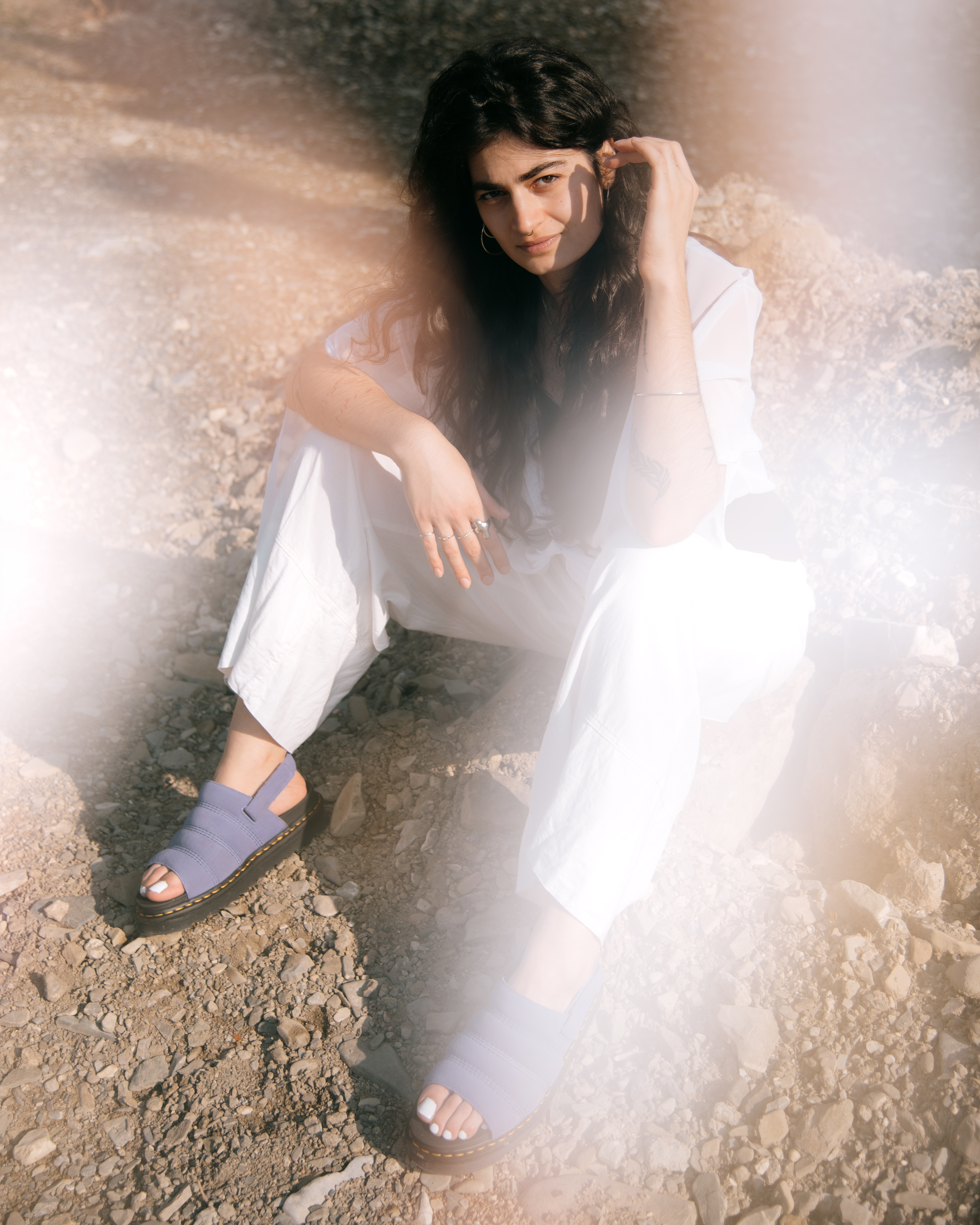
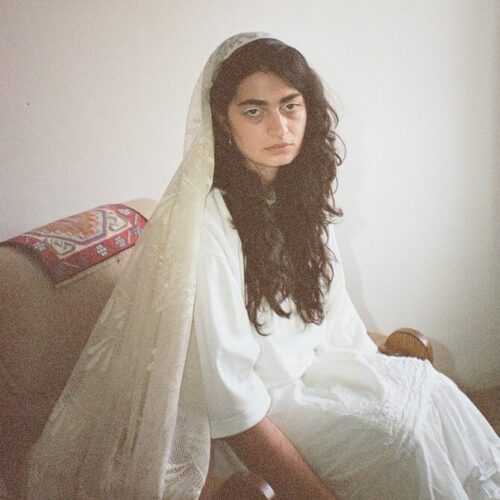
rogine
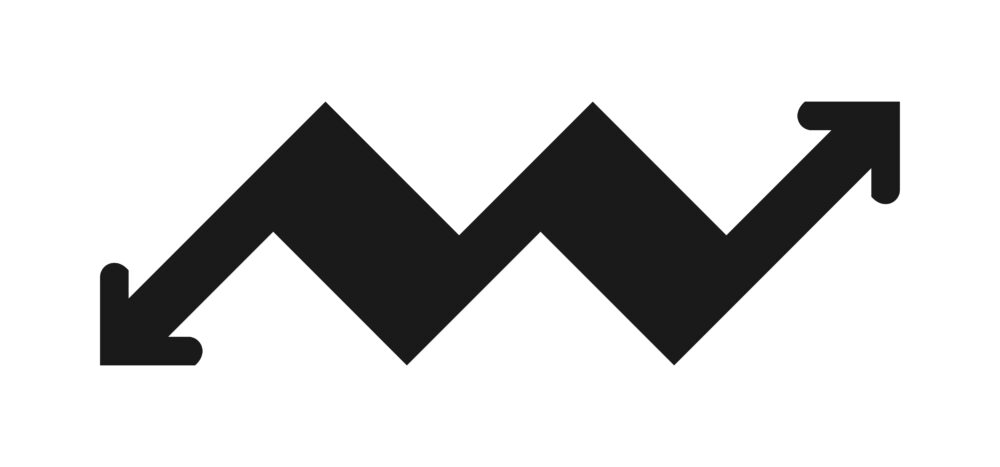
This article is brought to you by Struma+Iodine as part of the EM GUIDE project – an initiative dedicated to empowering independent music magazines and strengthen the underground music scene in Europe. Read more about the project at emgui.de
Funded by the European Union. Views and opinions expressed are however those of the author(s) only and do not necessarily reflect those of the European Union or the European Education and Culture Executive Agency (EACEA). Neither the European Union nor EACEA can be held responsible for them.